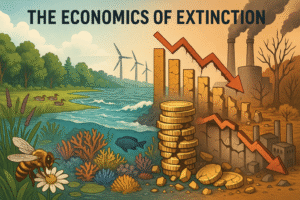Monetary policy might sound like a complex economic term that only economists and market analysts use, but it plays a crucial role in your everyday financial life. Whether you’re saving money, repaying a loan, or planning your investments, understanding how monetary policy works can help you make better decisions. This blog will decode the complexities of monetary policy in the Indian economy and explain why it’s important for everyone, not just the financial experts.
What is Monetary Policy?
Monetary policy refers to the process by which the central bank of a country (in India, it’s the Reserve Bank of India or RBI) controls the supply of money, often targeting an inflation rate or interest rate to ensure price stability and general trust in the currency. The RBI uses several tools to achieve these goals:
- Interest Rates: Adjusting the rates at which banks can borrow from or lend to the central bank.
- Reserve Ratios: Setting the amount of funds banks must hold in reserve rather than lend out.
- Open Market Operations: Buying or selling government bonds to regulate money supply.
Imagine the RBI as a pilot steering the economy through the ups and downs of financial weather, using these tools to keep it stable.

Current Monetary Policy Framework in India
India’s monetary policy framework aims to manage inflation and stimulate economic growth. The RBI regulates this through key policy rates:
- Repo Rate: The rate at which banks borrow money from the RBI. Lowering the repo rate makes borrowing cheaper, potentially boosting spending and investment.
- Reverse Repo Rate: The rate at which the RBI borrows money from the banks. This influences the interest banks earn and encourages them to lend more or less.
- Cash Reserve Ratio (CRR): The percentage of a bank’s total deposits that must be kept in reserve. Changing the CRR affects how much money banks can lend.
Decisions on these matters are made by the Monetary Policy Committee, which meets regularly to discuss and implement policies based on current economic conditions.
Impact of Monetary Policy on the Common Man
The RBI’s decisions on interest rates and money supply have a tangible impact on everyday economic activities:
- Loans and Mortgages: If the RBI cuts the repo rate, your home loan interest rates might decrease, reducing your monthly payments.
- Savings: Conversely, lower interest rates mean that savings accounts and fixed deposits might earn less interest, influencing how and where you save your money.
- Inflation: By controlling spending and borrowing, monetary policy helps keep prices stable, ensuring that your money retains its purchasing power.
Understanding these impacts can help you better navigate your personal finances during different economic conditions.
Why Should You Care About Monetary Policy?
Monetary policy affects not just the economy at large but also the individual financial choices you make:
- Financial Health: Effective monetary policy ensures low and stable inflation, which keeps the economy in balance and safeguards your spending power.
- Planning Major Financial Decisions: Knowing the trends in interest rates can help you decide the best times to take out a loan or buy a house.
- Employment and Wages: Economic stability driven by sound monetary policy supports better job prospects and wage increases across industries.
Being aware of the RBI’s policy announcements can give you insights into future economic conditions, helping you plan accordingly.

Conclusion
While monetary policy might seem distant from your daily concerns, it directly influences your financial environment—from the interest you receive on your savings to the cost of borrowing money. Staying informed about these policies not only helps you understand the broader economic picture but also empowers you to make wiser financial decisions. So the next time you hear about an RBI policy update, pay attention—it might just affect your wallet!
Author’s Note:
Thank you for taking the time to explore how monetary policy shapes the Indian economy and your financial decisions. As you navigate through your financial journey, understanding these concepts will empower you to make informed choices. Please feel free to share this guide with others who might find it useful. Stay curious and proactive about your economic environment!
G.C., Ecosociosphere contributor.
References and Further Reading:
- “Fault Lines: How Hidden Fractures Still Threaten the World Economy” by Raghuram G. Rajan – Offers insights into global economic policies, including those related to monetary strategies.
- “Interest Rate Markets: A Practical Approach to Fixed Income” by Siddhartha Jha – A guide to understanding how interest rates affect financial markets and personal finance.




